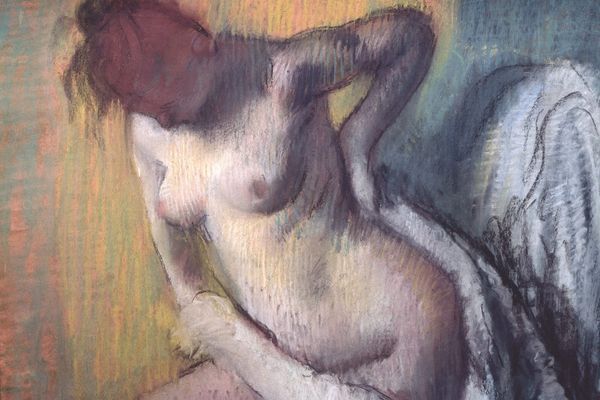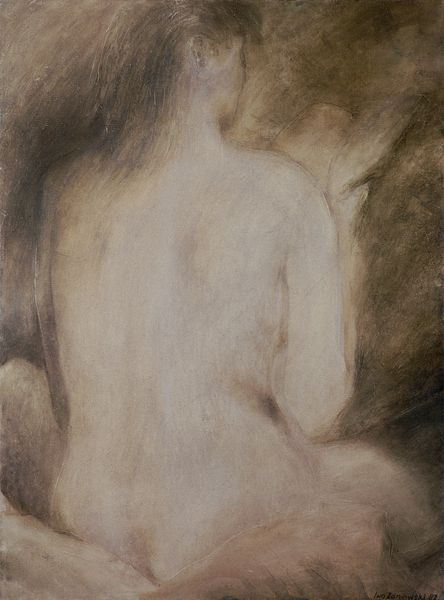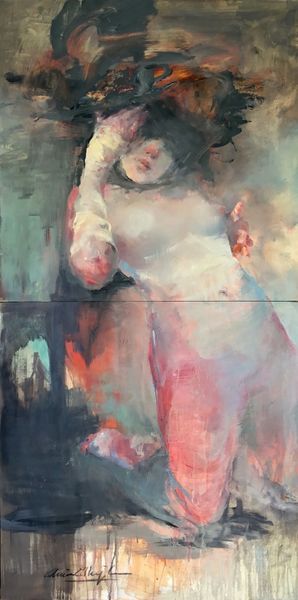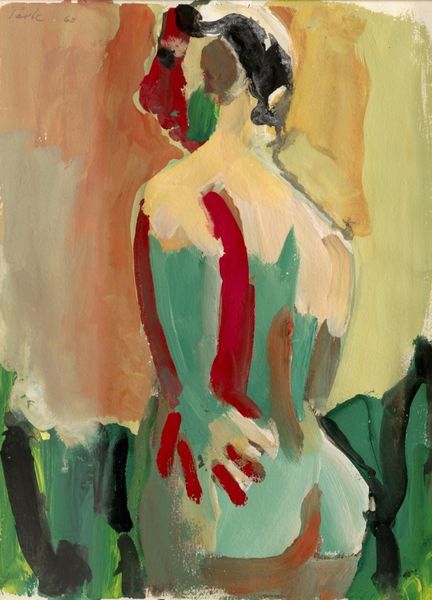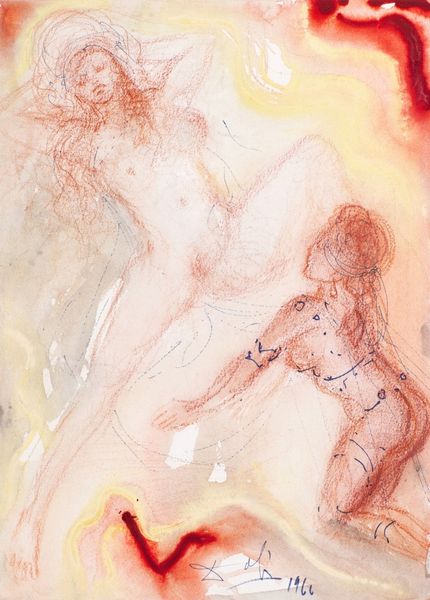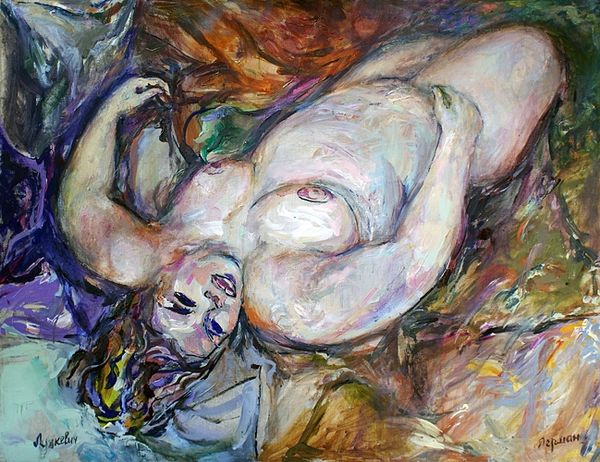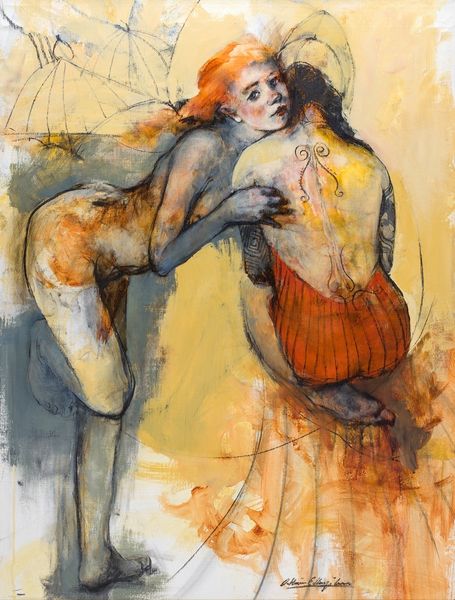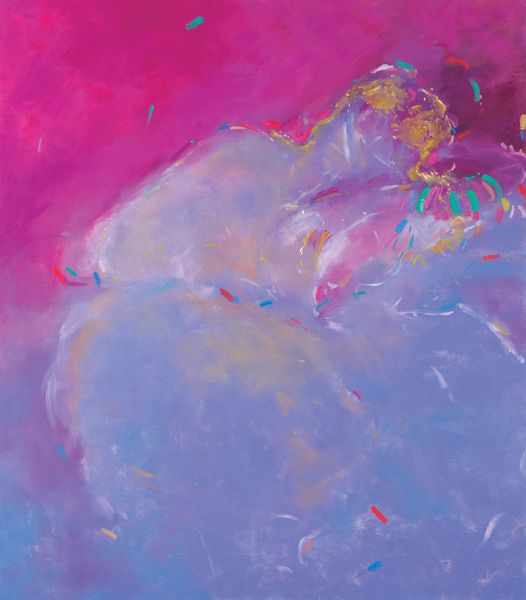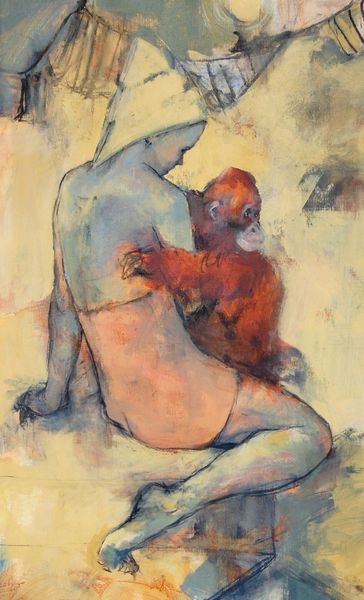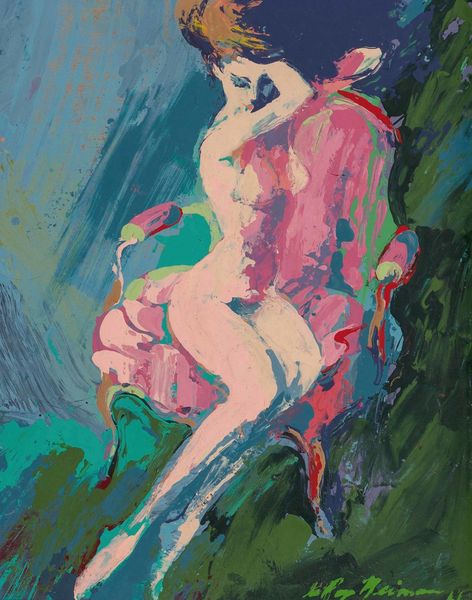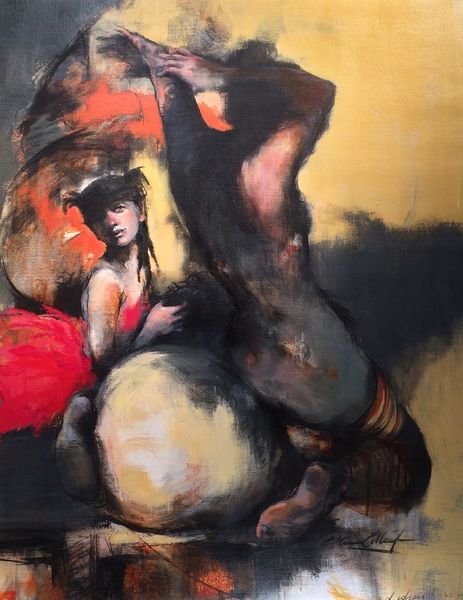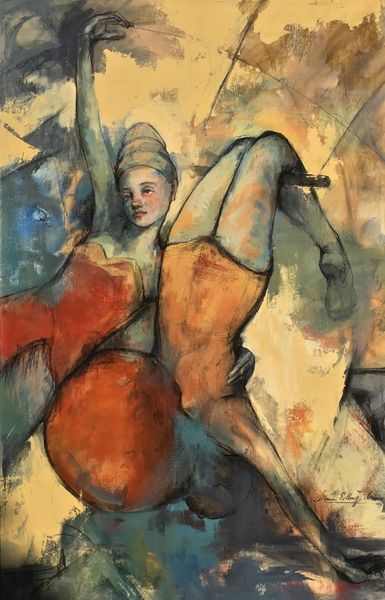
Dimensions: 69 x 50 cm
Copyright: Volodymyr Loboda,Fair Use
Curator: Looking at "Mother with a Child" by Volodymyr Loboda, created in 1976 using oil paint, what are your initial thoughts? Editor: It feels almost dreamlike. The blurred edges and warm color palette create a sense of intimacy and tenderness, though tinged with vulnerability. Curator: That vulnerability is something I want to explore. Painted during the Soviet era, this work subtly navigates the limited space for representing female experiences, motherhood, and the female body. Think of how the artistic context affected its production and how it echoes other images from this time. Editor: Absolutely. The positioning of the mother and child feels incredibly iconic. We see this archetypal image of maternal love represented across so many cultures – the nurturing embrace, the protective gesture. Even the colors evoke this—soft pinks, yellows, suggesting gentle warmth. Curator: And that iconic representation is so powerful because it allows the artist to touch on universal themes of care and protection. But it's also subversive; under Soviet ideology, such personal and intimate subject matter was frequently devalued, viewed as secondary to grand narratives of state and labor. Editor: You can read the somewhat obscured, softened forms as symbolic. The features are blurred, which universalizes them, moving beyond an individual portrait to suggest ‘motherhood’ as a concept or force. The visual language softens into the feeling, instead of focusing on details. Curator: Precisely. In this muted figuration, Loboda offers a statement on the importance of lived, interior experiences. The expressionistic style enhances the painting's emotional impact, transforming the personal into something politically relevant. This deeply affecting representation of maternal love subtly challenged the rigid constraints of acceptable artistic expression at the time. Editor: And when viewed through the lens of shared cultural memory, images like this gain more potency with time, and keep teaching new lessons. Each symbol becomes an affirmation of those lived experiences, quietly defying erasure. It’s quite moving. Curator: Yes, its presence reminds us of art's crucial function, acting not just as a looking glass reflecting identity but also as a site where meaning is forged and social structures can be tested and reconstructed.
Comments
No comments
Be the first to comment and join the conversation on the ultimate creative platform.
